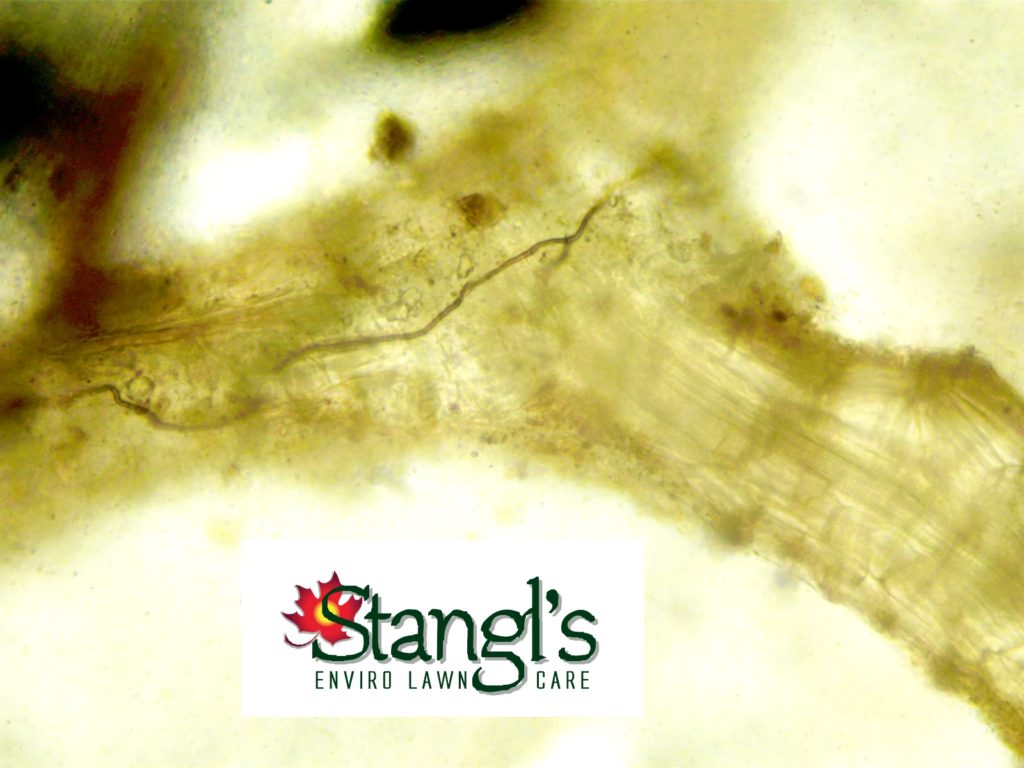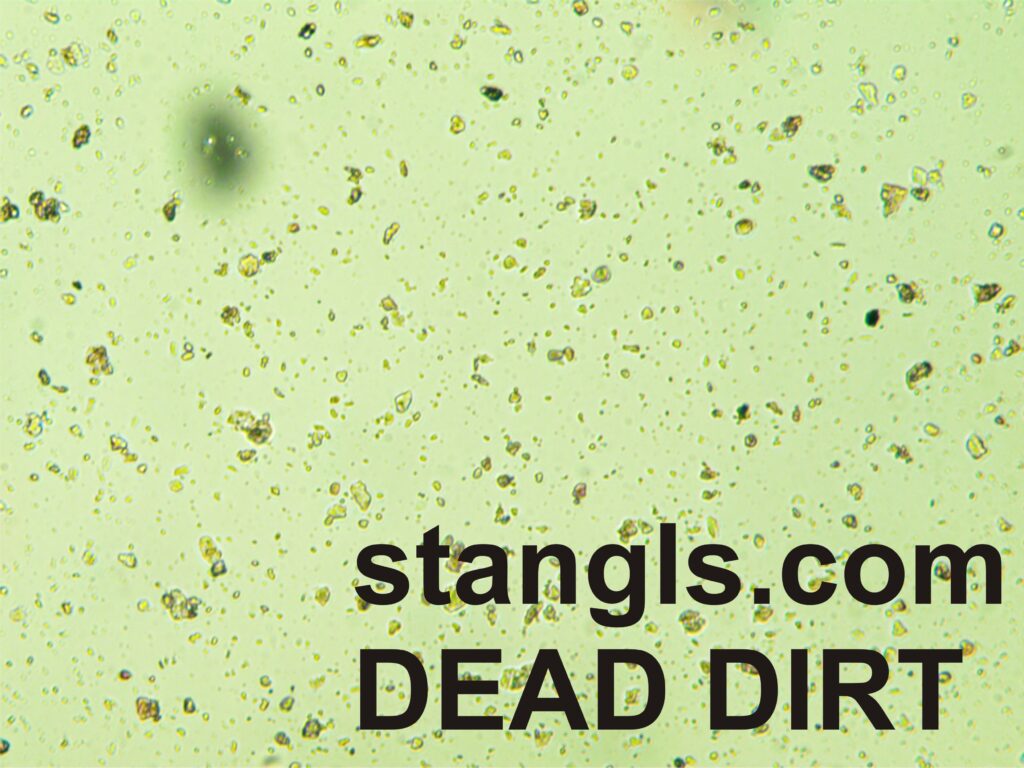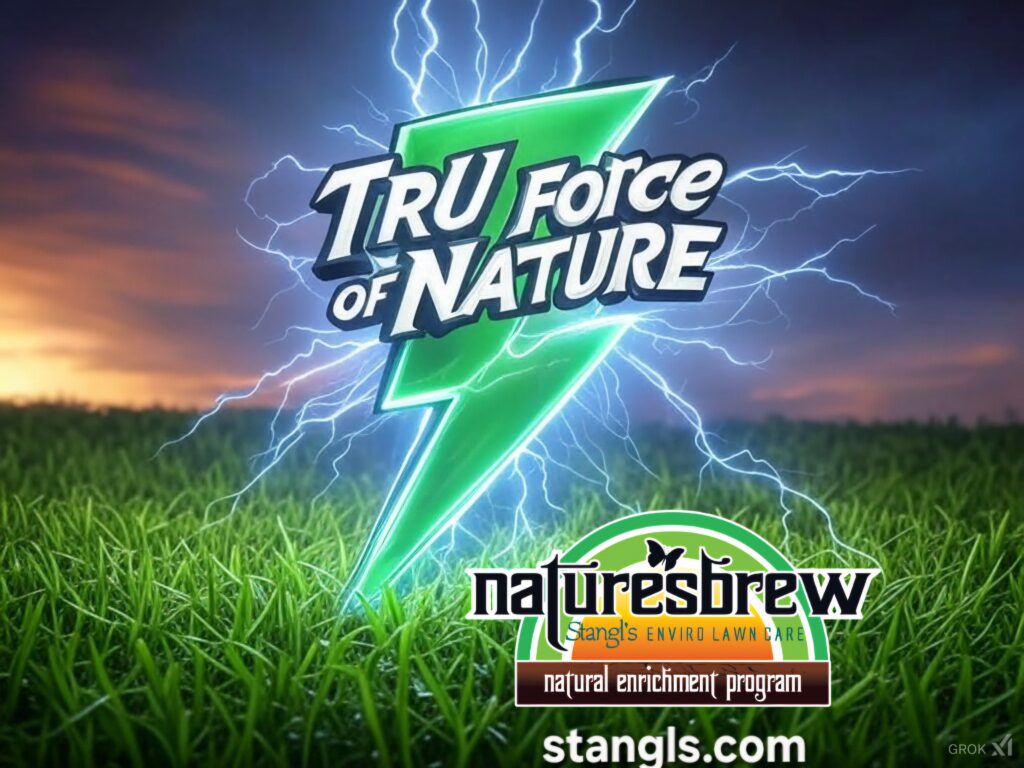Introduction: The “Feed Me” Fallacy

The lawn care industry has sold a simple narrative for over 70 years: sunlight and water aren’t enough—your lawn needs to be “fed” with fertilizers. This message implies that NPK (nitrogen, phosphorus, potassium) salt fertilizers are all a lawn needs to thrive. All fertilizer manufacturers follow this pattern, often greenwashing their products as environmentally friendly while ignoring the harm they cause to soil health, pets, kids, wildlife, and waterways. At Stangl’s Enviro Lawn Care, we’ve spent 44 years in Niagara learning that true lawn health goes beyond NPK—it’s about reviving the life in the soil. Drawing on insights from leading soil scientists, we’ll explore what soil really needs, the downsides of salt fertilizers, and how a regenerative approach can break the cycle of insanity: doing the same thing and expecting different results.
What Soil Really Needs: A Holistic View
Plants and soil require more than just NPK to thrive. Here’s what science tells us:

- Water, Sunlight, CO₂, and Atmospheric N₂: Plants need water for nutrient transport, but more critically, water supports soil biology, enabling microbes to thrive and cycle nutrients. Sunlight drives photosynthesis, CO₂ provides carbon for growth, and atmospheric N₂ (nitrogen gas) is converted into plant-available forms by biological N-fixers—like Rhizobium bacteria in legumes or free-living Azotobacter—reducing the need for synthetic nitrogen fertilizers. At Stangl’s, our Nature’s Brew extract contains these N-fixers, supporting a natural nitrogen cycle without synthetic inputs.
- Biological P-Solubilizers: Phosphorus in soil is often locked in insoluble forms. Microbes like Bacillus and Pseudomonas solubilize phosphorus, making it available to plants. This natural process is disrupted by salt fertilizers, which kill these beneficial microbes.
- Glen Rabenberg’s Five Essentials: Glen Rabenberg of Soil Works LLC identifies five essentials for soil health: calcium (Ca), phosphorus (P), carbon, oxygen (O₂), and hydrogen. Calcium flocculates soil, improving structure; phosphorus supports energy transfer; carbon feeds microbes; oxygen ensures aerobic conditions; and hydrogen (via water) maintains pH balance. These elements create a living soil system, far beyond the NPK focus.

The Rhizophagy Cycle: Nature’s Nutrient Exchange
James White’s research on the rhizophagy cycle reveals how plants naturally acquire nutrients. Plants exude sugars from their roots to feed microbes, which in turn provide more abundant NPK and other nutrients back to the plant, along with a thriving microbial community. Water is essential in this process, facilitating the movement of exudates out and nutrients back in. However, when NPK salt fertilizers are applied, the synthetic NPK “wins”—overwhelming the system and killing off needed biology like fungi, protozoa, nematodes, and higher nutrient cyclers. This disrupts the rhizophagy cycle, leaving plants dependent on synthetic inputs and soil depleted of its natural resilience. At Stangl’s, we support this cycle with Nature’s Brew, which contains N-fixers and P-solubilizers, ensuring a balanced, biology-driven nutrient exchange.
The Downsides of NPK Salt Fertilizers
Salt fertilizers, like those from Scotts, promise quick green growth but cause long-term harm:

- Soil Compaction: Salt fertilizers increase soil salinity, disrupting soil structure and causing compaction (PSI above 150). Compacted soil restricts air and water movement, suffocating microbes and roots. Glen Rabenberg notes that compaction is a primary limiting factor, requiring targeted calcium applications (like GSR Calcium at 90 grams per acre) to open up soil.
- N-Driven Bacterial Dominance and Weeds: Excess nitrogen drives bacterial activity, throwing off the carbon-to-nitrogen (C:N) ratio (ideal 16:1, per Soil Works). This bacterial dominance consumes organic matter too quickly, reducing soil structure and encouraging weeds, which thrive in bacterial-dominated, low-Brix environments.
- Reduced Resilience to Drought and Summer Brown-Out: Salt fertilizers push EC (electrical conductivity) above 1.0, putting microbes into dormancy (ideal EC is 0.3–0.7, per Glen Rabenberg). This kills soil life, reducing water retention and leaving lawns vulnerable to drought and summer brown-out. Christine Jones highlights that healthy soil biology improves water-holding capacity, making lawns more resilient.
- Increased Insect and Disease Attacks: Dr. Thomas Dykstra explains that low Brix (below 10) makes plants susceptible to insects and diseases. “I don’t know of any diseases that cannot be controlled by a high-BRIX plant,” he says, noting that double-digit Brix (10–14+) ensures natural resistance. Salt fertilizers lower Brix by killing microbes, keeping lawns on a “treadmill of inputs”—more sprays, more fertilizers, more water—to address the problems they cause.
- Environmental Harm: Runoff from salt fertilizers causes algae blooms and red tides, harming pets, kids, wildlife, and Niagara’s waterways. David Montgomery, in Dirt: The Erosion of Civilizations, warns that chemical-intensive practices degrade soil health, with ripple effects on ecosystems.
Insights from Leading Soil Scientists
Regenerative lawn care is grounded in science, drawing on the work of pioneers in soil health:

- David Johnson: Johnson’s research on the “BEAM” (Biologically Enhanced Agricultural Management) approach shows that compost with high fungal-to-bacterial ratios improves soil carbon sequestration, reducing the need for synthetic fertilizers. His work supports the idea that living soil, not NPK, drives plant health.
- Christine Jones: Jones emphasizes the “liquid carbon pathway,” where plants pump carbon into the soil via root exudates, feeding microbes and building soil structure. This enhances water retention and drought resilience, countering the effects of salt fertilizers.
- Kris Nichols: Nichols highlights the role of glomalin, a glycoprotein produced by arbuscular mycorrhizal fungi, in soil aggregation and carbon storage. Salt fertilizers kill these fungi, reducing glomalin and soil stability.
- Nicole Masters’ 5 M’s: In For the Love of Soil, Masters outlines the 5 M’s—Mindset, Minerals, Microbes, Management, and Monitoring—as a framework for regenerative agriculture. She stresses the importance of microbial diversity, which salt fertilizers destroy, and monitoring soil health (like Brix, EC, PSI) to guide practices.
- Elaine Ingham: Ingham’s Soil Food Web approach underscores the role of a balanced microbial community—bacteria, fungi, protozoa, nematodes—in nutrient cycling. She notes that chemical inputs disrupt this web, leading to dependency on more inputs.
- David Montgomery: Montgomery’s work in Growing a Revolution shows that regenerative practices—like reducing chemical inputs and supporting soil biology—can restore soil health, improving resilience and reducing environmental harm.
- Joel Williams: Williams focuses on nutrient density and plant health, noting that high-Brix plants (10–14+) are naturally resistant to pests and diseases, aligning with Dr. Dykstra’s findings. He advocates for carbon-based inputs (like molasses) to feed microbes, as Soil Works does.
The Definition of Insanity: 70 Years of the Same Problems
The “feed me” narrative is too good to be true—a snake oil promise that keeps lawns on a treadmill of inputs. For over 70 years, the lawn care industry has sold NPK salt fertilizers, yet the problems persist: pests, diseases, weeds, drought, and environmental harm. This is the definition of insanity—doing the same thing and expecting different results. Homeowners, driven by the “ego trophy lawn” mindset and social media’s “if it’s online, it must be true” echo chamber, keep buying into the hype, but the cycle continues.
Stangl’s Regenerative Approach: A Better Way

At Stangl’s Enviro Lawn Care, we’ve broken this cycle by focusing on soil biology, not quick fixes. For 44 years, we’ve learned from science and experience, transitioning to regenerative practices in 2014/15. We use Nature’s Brew—packed with N-fixers and P-solubilizers—and our upcoming plasma fertilizer (April 2025) to support the rhizophagy cycle, feeding microbes to build living soil. We align with Glen Rabenberg’s five essentials—calcium, phosphorus, carbon, oxygen, hydrogen—ensuring a balanced system. Our 30-year commercial clients haven’t seen insect or disease issues in decades, thanks to high Brix (10–14+) and healthy soil biology. Dandelions, demonized by the industry, are our allies, signaling soil health issues we address naturally.
Join the Regenerative Revolution
Ready to ditch the NPK treadmill for real soil health? Join our Regenerative Lawn Care Facebook page (96 members and growing!) and grab our toolkit on March 24th, 2025—a 14-section guide to building living soil. See the proof at Stangl’s Before & After Transformations, or call (905) 641-8133 to start your journey. #AwakenSoil #Stangls #Niagara #RegenerativeLawn #EcoSafe

Further Reading and Resources
Explore the science and practices behind regenerative lawn care with these resources:
- Glen Rabenberg and Soil Works LLC: Learn more about the five essentials for soil health and GSR Calcium at Soil Works LLC. Watch their Soil Solutions Series on YouTube: Exploring “Regenerative” Ag w/ Glen Rabenberg & Dr. Thomas Dykstra, Healthy Plants 101 #planthealth #soilhealth, Insect Resistance (Ep. 03), Soil Electrical Conductivity (Ep. 04), and Healthy Plants 101 Case Study – BRIX, Calcium & Solving Bitter Pit. (Note: Update video IDs from https://www.youtube.com/@SoilWorksLLC-GSRCalcium/videos.)
- Dr. Thomas Dykstra: Dive into Brix and plant health at Dykstra Laboratories.
- James White on the Rhizophagy Cycle: Read more about the rhizophagy cycle in White’s research
- David Johnson: Explore the BEAM approach at Institute of Sustainable Agricultural Research, where Johnson’s work on soil carbon sequestration is detailed.
- Christine Jones: Learn about the liquid carbon pathway at Amazing Carbon, Jones’ platform for soil health education.
- Kris Nichols: Discover the role of glomalin in soil health through Nichols’ work at KRIS Systems Education & Consultation
- Nicole Masters: Read For the Love of Soil and explore the 5 M’s at Integrity Soils.
- Elaine Ingham: Dive into the Soil Food Web at Soil Food Web School, where Ingham offers courses and resources.
- David Montgomery: Check out Dirt: The Erosion of Civilizations and Growing a Revolution via Montgomery’s website, Dig2Grow.
- Joel Williams: Explore nutrient density and plant health at Integrated Soils, Williams’ consulting platform.